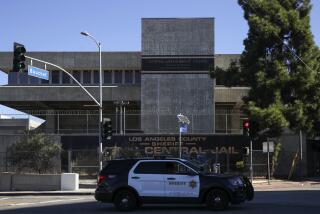Sell San Quentin
San Francisco was a rough-and-tumble Gold Rush boomtown in 1852, when authorities decided they needed more secure facilities to house troublemakers than the prison ships docked in the bay. So they built a prison at Point San Quentin, an out-of-the way peninsula north of the city.
That location made sense 157 years ago; since then, the Marin County neighborhood surrounding it has become one of the most desirable places to live in the state, a high-end suburb of wooded hills and spectacular bay views just a 10-minute drive from the Golden Gate. In the midst of this beauty stands one of the oldest prisons in the country, a maximum-security facility that houses California’s death row. San Quentin State Prison is crumbling and overcrowded, and it sits on extraordinarily valuable land. Yet years of efforts to sell the property and build a new death row somewhere else have gotten nowhere.
Whether because of inertia or the power of the prison guards union, which objects to moving death row because workers would be uprooted, the state not only continues to operate San Quentin but may sink more money into it. In 2003, the Legislature approved the $220-million construction of a new death row complex at the prison, but auditors later revealed that the site is unstable, raising the cost to $395.5 million. Money shortages and political gridlock have kept the project on hold, but that can’t last forever because the number of condemned inmates is rising and we’re running out of cells for them.
Gov. Arnold Schwarzenegger has come to appreciate the folly of all this, recently placing San Quentin on a list of state properties that should be sold to help make up a $24-billion budget shortfall. The governor is being disingenuous -- it would take years to sell the facility and build a new death row, so it’s no solution to the state’s immediate money troubles -- but it’s nonetheless the right thing to do.
State Sen. Jeff Denham (R-Atwater) has been trying for four years to move a bill to sell San Quentin through the Legislature. He believes that the site could fetch as much as $2 billion from developers and that a replacement could be built elsewhere for about $500 million. The bill, SB 28, is stalled in the Senate Public Safety Committee, which routinely holds bills that would worsen prison overcrowding. Denham’s bill deserves consideration anyway. It would indeed cause housing problems if San Quentin’s inmates were sent to other prisons, but there’s no reason the state couldn’t lease San Quentin from its new owner until construction of the new correctional facility was complete.
Selling San Quentin and building homes or businesses in its place would boost the state’s economy, lower prison operating costs and possibly provide a one-time cash infusion to the general fund, all without costing taxpayers a dime. Lawmakers should get it done, even if it won’t solve the budget crisis.
More to Read
Get the L.A. Times Politics newsletter
Deeply reported insights into legislation, politics and policy from Sacramento, Washington and beyond. In your inbox three times per week.
You may occasionally receive promotional content from the Los Angeles Times.










